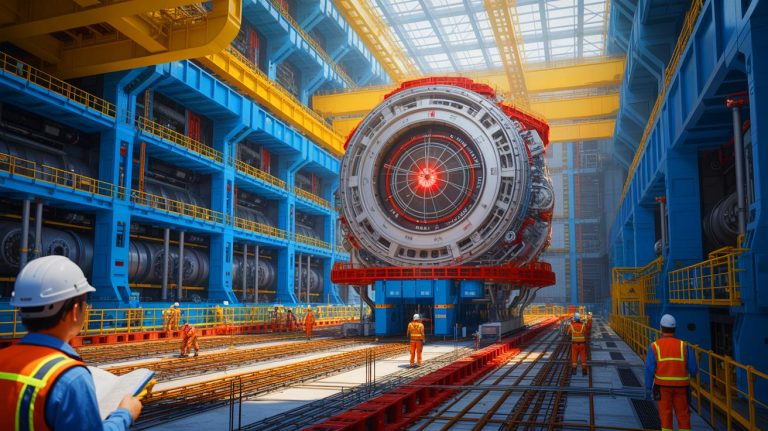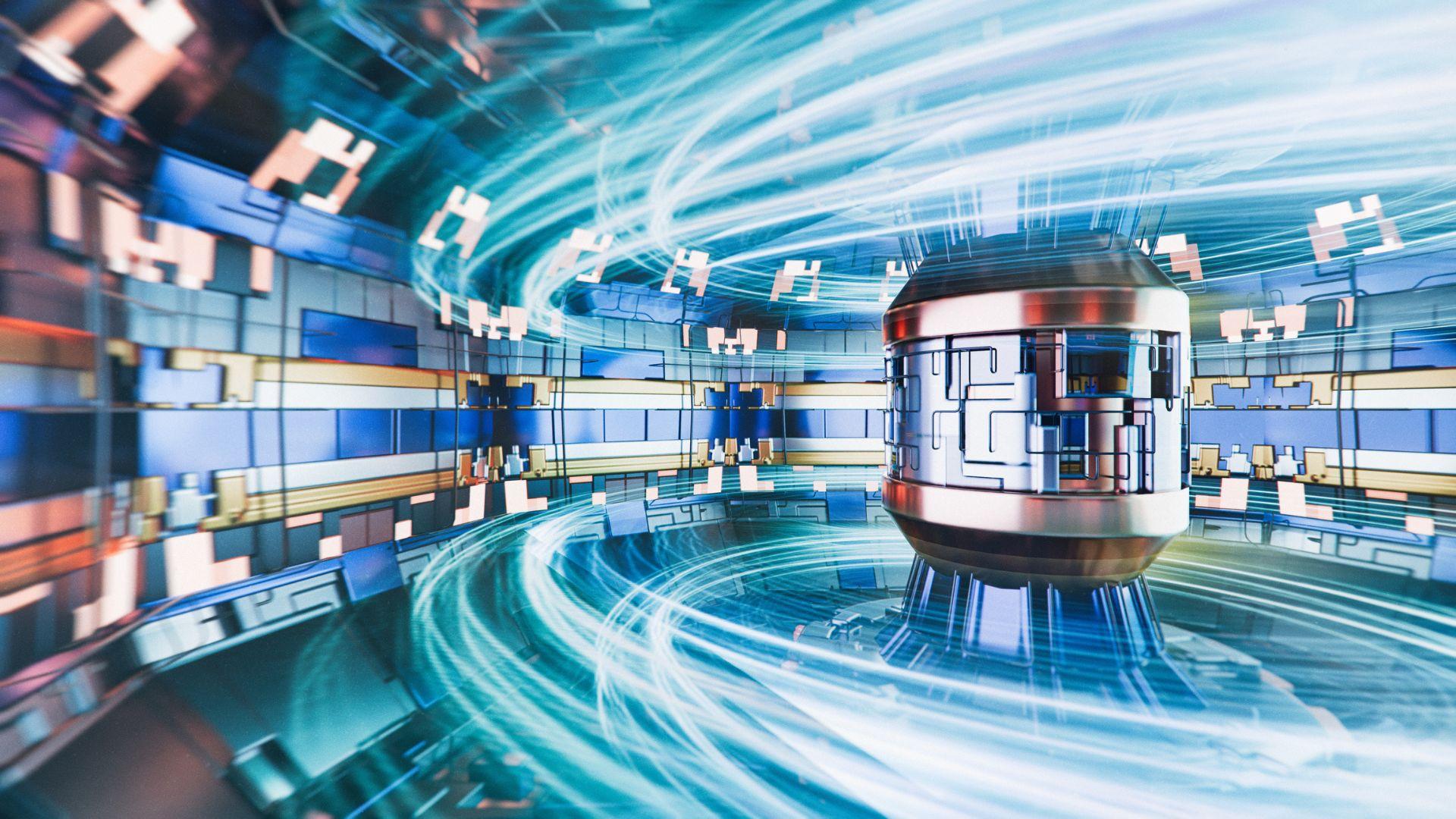| IN A NUTSHELL |
|
The pursuit of sustainable energy sources has become a global imperative as nations strive to reduce carbon emissions and combat climate change. Among these efforts, the development of nuclear fusion technology stands out as a promising avenue for clean energy. China is at the forefront of this initiative with its ambitious project, the Burning Plasma Experimental Superconducting Tokamak (BEST) reactor, which aims to produce five times the energy it consumes by 2027. This groundbreaking endeavor represents a significant leap forward in the quest for efficient fusion energy, leveraging innovative design and technological advancements to achieve unprecedented energy gains.
The Groundbreaking Design of the BEST Fusion Reactor
The BEST fusion reactor is an exemplary model of innovation, utilizing the well-established tokamak design. This design features a doughnut-shaped vessel that contains plasma heated to temperatures far exceeding those found on the surface of the Sun. Within this high-temperature environment, hydrogen isotopes fuse to form helium, releasing a substantial amount of energy. Unlike traditional nuclear fission, the fusion process generates minimal radioactive waste, which is significantly easier to manage.
While many fusion reactors serve as experimental platforms, the BEST reactor is poised to facilitate real-world energy production with a focus on achieving a net energy gain. As an intermediate step between China’s Experimental Advanced Superconducting Tokamak (EAST) and the future Chinese Fusion Engineering Demo Reactor (CFEDR), the BEST reactor is a critical component of China’s strategic roadmap for harnessing fusion energy. Its successful implementation could set a new standard for fusion technology and its potential applications worldwide.
Competing with the US at ‘China Speed’
The assembly of the BEST reactor is a monumental undertaking, involving tens of thousands of components and weighing approximately 13.2 million pounds. Despite its massive scale, the reactor’s dimensions are only slightly larger than the SPARC fusion facility developed by Commonwealth Fusion Systems in the United States. While SPARC employs more powerful magnets, the BEST reactor is designed to achieve a fivefold energy gain compared to SPARC’s goal of doubling its input energy.
China’s rapid progress in the construction of the BEST reactor underscores its commitment to achieving operational readiness ahead of schedule. Although both the BEST and SPARC projects commenced around the same time, China’s accelerated pace has enabled significant advancements in civil construction and system component development. The meticulous precision required for the tokamak core assembly, with tolerances in the millimeter range, highlights the complexity and expertise involved in this groundbreaking project. The fully assembled reactor is slated for delivery by November 2027, reflecting China’s determination to lead the fusion energy race.
Technological Advancements Driving Fusion Innovation
The pursuit of nuclear fusion as a viable energy source has been a longstanding scientific endeavor, recently invigorated by significant advancements. The success of the US National Ignition Facility (NIF) in demonstrating a net energy gain has galvanized efforts worldwide to scale up fusion energy production. This renewed momentum is driving countries to invest in larger fusion energy plants to test the technology’s commercial viability and maximize its energy output.
The BEST reactor exemplifies the integration of cutting-edge technologies and engineering prowess required to advance fusion research. By building on the successes of previous projects like EAST and leveraging insights from global research, the BEST reactor is positioned to push the boundaries of what is possible in fusion energy. As nations continue to collaborate and compete in this arena, the potential for nuclear fusion to revolutionize the global energy landscape becomes increasingly tangible.
Implications and Future Prospects
The successful deployment of the BEST fusion reactor holds significant implications for the future of energy production. By achieving a fivefold energy gain, China could potentially redefine the economics of fusion energy, making it a more feasible and attractive option for widespread adoption. The environmental benefits of fusion, including minimal greenhouse gas emissions and reduced radioactive waste, position it as a key component of a sustainable energy future.
As the world grapples with the challenges of climate change and energy security, the advancements in fusion technology offer a promising path forward. The collaborative efforts of nations in this field underscore the global importance of developing clean, efficient energy sources. As China races to complete the BEST reactor, the question remains: will this breakthrough herald a new era of energy independence and sustainability, and how will it shape the future of global energy policies?
Did you like it? 4.5/5 (21)









Wow, China is really moving fast with this! 🚀
How does the BEST reactor compare to ITER in terms of output?
This sounds like science fiction. Is it really possible by 2027?
Gr8 article! Thanks for the info. 👍
Why isn’t the US investing more in fusion research?
Can this technology be used worldwide, or is it limited to China?
How much will it cost to build and maintain such reactors?
With China’s speed, maybe they should build our roads too! 😂
Isn’t there a risk of radiation even with fusion?
Does this mean we can expect lower energy prices in the future? 🤞
The US needs to step up its game! 🏃♂️
China is always full of surprises. What will they think of next?
Fusion energy seems like a dream. Hope it becomes reality soon!
Are there any environmental risks associated with the BEST reactor?
I wonder if there are plans for international collaborations?
Can fusion power be integrated into existing energy grids?
What happens if something goes wrong during fusion?
Thnx for the update! Very interesting read. 😊
Will China share this technology with other countries?
Why is fusion considered safer than fission?
Is the US really lagging behind, or is it just media hype?
Can this reactor help in reducing global warming?
Are there any other countries close to achieving fusion energy?
How reliable is the energy output from fusion reactors?
Let’s hope this leads to a cleaner and greener future! 🌍
The race is on! Who will win the fusion race? 🏆
How does the energy gain compare to current nuclear power plants?
China’s innovation is truly impressive. Hats off! 🎩
Why is fusion energy considered the “holy grail” of energy?
When can we expect fusion energy to be commercially available?
Is it true that fusion produces no radioactive waste at all?
How will this affect global energy policies?
Seems like the future is bright for fusion energy! ☀️
Is there any way to visit these facilities and see them in action?
Fingers crossed this breakthrough happens soon! 🤞